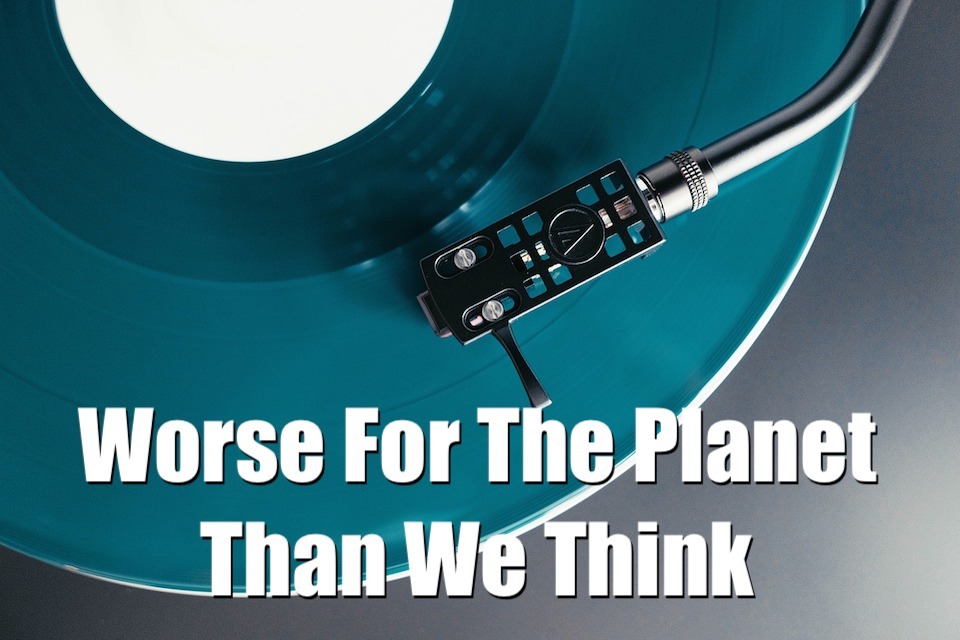- in Media by Bobby Owsinski
The Environmental Impact Of Various Music Formats Will Surprise You

When we look at our most used music delivery formats we immediately think that they’re pretty environmentally friendly, right? After all, vinyl records and CDs are made from plastics and are recyclable, and streaming music is in the cloud where there’s no impact at all. I thought the same thing until I read more about it and my eyes were opened. Let’s look at what the environmental impact of each format really is.
Vinyl Records
Vinyl continues to grow in popularity again, and while it will never be as big a part of the recorded music industry as it once was, sales were over 10 million in the U.S. alone last year.
Contrary to popular belief, vinyl records are not recyclable. An album’s cover is made from cardboard and there’s no problem with recycling there, but the PVC used to create a record is actually a long-term environmental problem, since it will likely take centuries to decompose. What’s worse, they leak the solvents that make the plastic soft and resilient, which can eventually escape since they will probably outlive any landfill they’re placed in.
What’s more, production of 10 million records leads to the creation of about 5,000 tons of CO2, which is the carbon footprint of around 1,000 people. Scary.
CDs
CDs use less materials than a vinyl record, and that’s the good part. The bad is that they’re made of layered polycarbonate and aluminum which are difficult to separate and therefore can’t be recycled. How about the plastic cases? Yes, it’s made out of a single polycarbonate material, but recyclers don’t often accept them. They’re a better environmental alternative to vinyl, but not by much.
Digital Music In The Cloud
So you’re probably thinking, “Surely the digital music that I consume online can’t be hurting the environment, since it doesn’t use any materials.” That’s true, but there’s a different type of impact.
Whether you’re consuming music from Spotify, Apple Music, or one of the dozens of other similar services, the files are all stored on servers which require heavy cooling and power to run. Plus, there are transmission costs through the various networks and ISP, to a router and to your phone or stereo system.
The BBC estimates that if you listen to a streamed album more than 27 times (granted, that’s a lot even for a fan), it actually costs more environmentally than listening to a CD! That said, listening to streamed one-off songs are still cheaper, but I think we all knew that.
Still, it gives you plenty to think about, since the environmental impact of the music formats that we regularly consume aren’t what we think they are, and that could end up being very bad for the planet in the end.
Sorry, but comments have been disabled due to the enormous amount of spam received. Please leave a comment on the social media post related to this topic instead.

